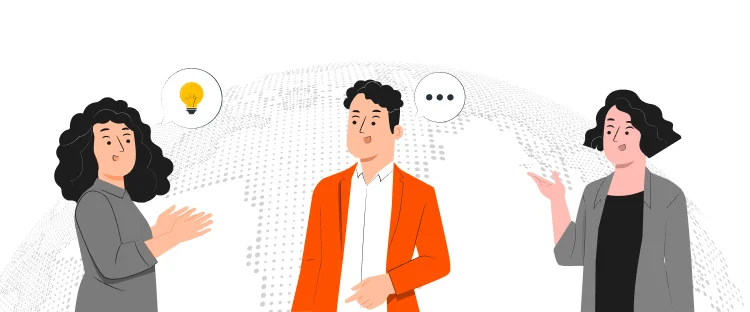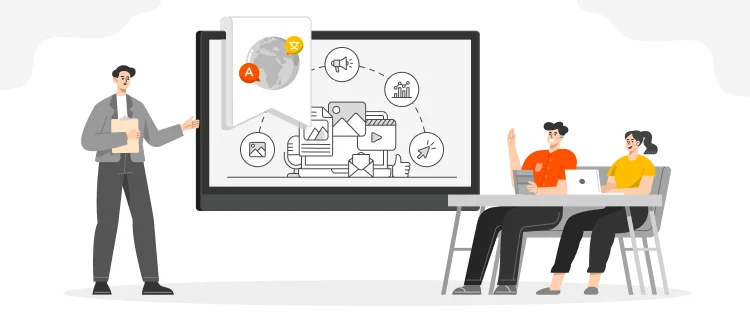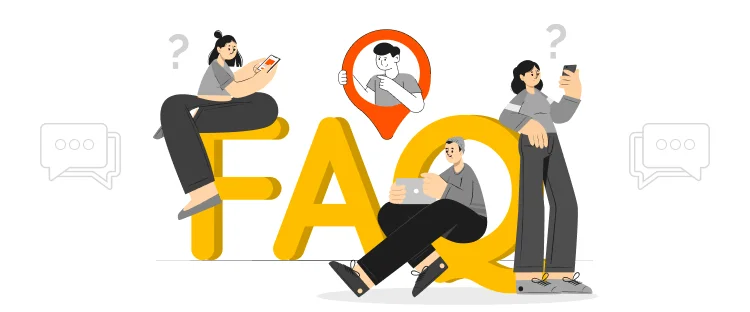The globally connected world of today offers great opportunities for growth and success for all businesses. Whether it is the tech industry, engineering, or medicine, businesses are focusing on expansion beyond borders. The medical and healthcare industry is also not far behind in this quest for expansion. Translation plays a vital role in ensuring medical companies achieve this goal smoothly.
The medical industry relies on expert translators to get translations of their documents, such as case files, records, research, and even medical patents. This medical patent translation may seem like a challenge, but it is easily done by professional linguists who understand the nuances of translating complex documents.
Here is all you need to know about the translation of medical patents.
A patent is a legal instrument that gives the patent holder the exclusive right to make, sell, or offer to sell the subject matter which the patent “claims”. Mostly relating to clinical trials and pharmaceuticals, medical patents may include methods of making or using them. A medical patent may also include important medical information such as medical treatment regimens, surgical procedures, medical device information, and healthcare technology guidelines.
Similar to legal documents, a medical patent is a protection granted by a government. It protects the inventor of a unique medical product, process, or technology against market competition. Moreover, a medical patent prevents the patented invention from being reproduced, sold, or used by others for a limited time.
An example of a medical patent is a drug produced by a biotech company. The company can use this patent to protect its intellectual property rights, against generic competition for a set time. By protecting this drug with a patent, the company can sell the drug for high profits, while compensating for the costly research and development for bringing it to market.

The foremost goal of a medical patent is to provide a unique selling or marketing advantage to the inventor. It limits the usability of any aspect of the subject matter of the patent for a certain amount of time. The patent stops the competitors from using or imitating the patent.
A medical patent is utilized by biotech companies, physicians, and universities. The translation of a medical patent is a critical but tough task, owing to the legal implications of the patent. An expert medical translator who is adept at handling medical document translation has to perform medical patent translation. In doing so, he has to carefully consider the terms and conditions mentioned in the patent, along with other legal matters such as authorization and access. Particular care has to be taken during the translation of medical patents as any error in translation can have huge legal implications for all the concerned stakeholders.
During the filing of a patent in a foreign language, every term of the patent needs to be translated as accurately as possible. This is because even a small error can result in a legal loophole that would lead to the exploitation of intellectual property. This is the main reason why the chosen translation agency should have expert medical translators for translating complex medical patents and their contents.
Just like other patents, a medical patent also holds a legal value that needs proper handling and authorization. The patent translation can be divided into two types–filing translations and information translations. Both may seem the same, but they are intended for specific audiences and serve different purposes. When this specific purpose is highlighted, only then a medical company can choose the right translation service for its needs.
In filing translation, the patent document is used for the official record in the patent application process. The intended audience of the filing translation patent consists of patent officials, legal professionals, and patent licensees who examine the application. This type of translation can be concise, clear, and light in jargon. The main purpose of this type of patent translation is to convey the meaning of the invention as comprehensively as possible so that the patent can be filed correctly.
Information translation for medical patents involves the accurate description of the invention as well as its inner workings. It is mostly used as a complement for patents that have already been filed, especially as evidence in court proceedings. This type is mostly handled by court officials as well as industry experts. The type of information translation must be as close to the original as possible, with all specifications and related terms. Moreover, an information translation is useless on its own. In order for it to be effective, it must have its filed counterpart.

A professional patent translation for medical patents is essential as it ensures that the patent translation is error-free and minimizes the risk of any rejection. However, a bad-quality translation means that international patents cannot be enforced properly.
Professional patent translation ensures that the translation is carried out within time so that all patent application deadlines can be met. Conclusively, hiring a professional translation service for medical patent translation saves money. If a medical company hires a translation agency that offers a cheap quote but lacks all the relevant skills and experience, it may need to retranslate its patents, causing a whole lot of cost hassles.
Machine translation may be fast and efficient, but it comes with its own set of controversies when it comes to medical patent translation. There is no denying that machine translation has made incredible progress over the last couple of decades as well as shown remarkable results in some fields.
Machine translation is used widely in medical patent translation when paired with post-editing. There are various machine translation tools specifically available for patents such as European Patent Office (EPO), Patent Translate, and WIPO Translate.
Machine translation offers many advantages, the most important ones of which are being scalable, fast, and cost-effective. There are two factors that must be kept in consideration when deciding if machine translation is the best option for a medical patent. A medical company should make sure that the patent translation is always reviewed by a professional translator. This translator should have a specialization in medical patent translation and should be well aware of the requirements of the country or region where the company is filing the medical patent.
As mentioned above, a medical patent needs to be carefully translated in order for it to be efficiently used in another area or region. These are some of the essential features that a translated medical patent must have:
A certified medical patent translator understands the importance of a flawless translation, particularly if it is related to the medical field. He will ensure that the final patent meets all the requirements set by local laws of medical patents. Owing to the application process, the medical patent translation will run smoothly without any delays and you won’t have to worry about miscommunications.
Timing is crucial in patent applications – the later you submit it to the patent office, the higher the risk of your idea being exploited. Professional translation agencies can offer you the fastest services due to streamlined translation processes and procedures – thanks to this they can provide high-quality translation in the shortest time possible.
As we already mentioned, even small mistakes can bury your chances of obtaining IP protection. Hiring professional translators minimizes the risk of faulty translation and ensures the correct filing of your patent.
Despite being expensive, professional translation services can save you a lot of money. How? The answer is quite easy – you’ll only pay once as there won’t be any need for later fixes or redoing the whole thing. So, while looking for a translator, keep in mind that a lower price doesn’t always equal lower overall costs – it’s better to pay more for an expert than to fix rookie mistakes made by a cheaper alternative.

Colorado is said to be one of the best places to do business because the business environment is very friendly
Read More
The global marketplace has become an attractive place for brands and businesses, where they strive to create a presence of
Read More
CAD, or computer-aided design and drafting (CADD), is the use of computer technology for design and design documentation. CAD software
Read More
Many global companies, foreign governments and Iranian are hoping to see an increase in investment in Iran after declaring the
Read More
Artificial intelligence has taken a big space in almost every industry. There is also a widespread acceptance that AI is
Read More
Persuasion is all about manipulating other people behavior. At first it might sound immoral but it doesn’t have to be.
Read More
Now days everyone is searching for good ideas for their company they wanted to be more creative, they wanted to
Read More
Technology has now much diverse roots in this age of development. Now it is not wrong to say, that you
Read More
Localization is the practice of altering the functional properties of a product and also its characteristics. This is easily done
Read More


Document Translation
Professional document translation by native expertsApp Localization
Get more downloads by adapting your app for different target marketsVideo Translation
Multilingual translation and subtitling servicesWebsite Localization
Adapt your website into multiple contexts for global reachSoftware Localization
Adapt your software for global usersGame Localization
Reach new players with localized gameplayMTPE
Refine AI translations for natural fluencyBusiness Translation
Professional translation for business documents and websitesDTP & File Conversion
Professional DTP and File conversion, supporting multiple file formatsProofreading
Perfect your content with expert review© Copyright 2026 MarsTranslation